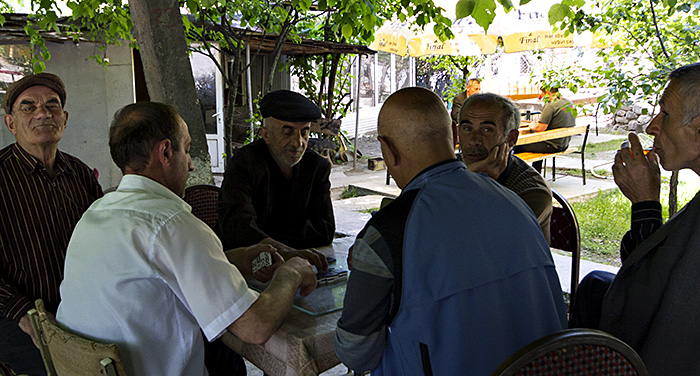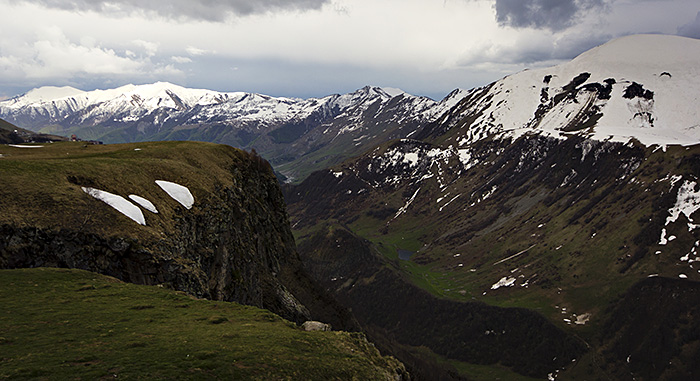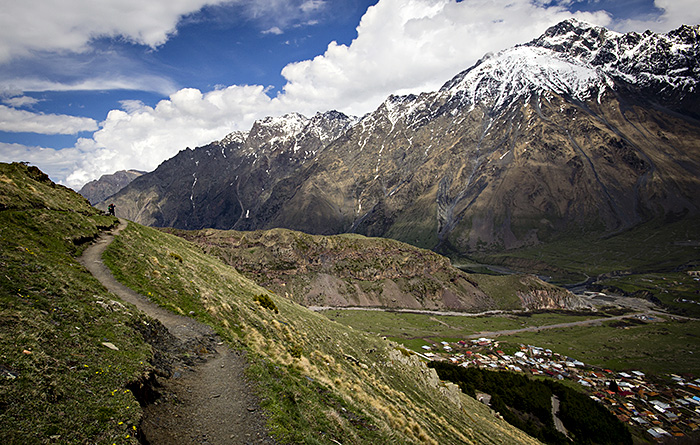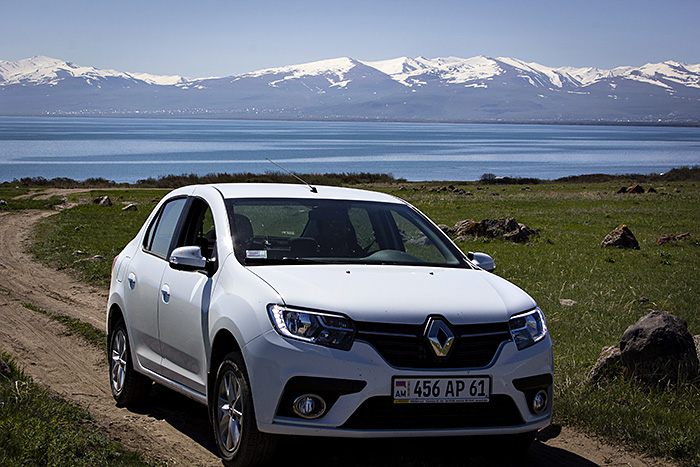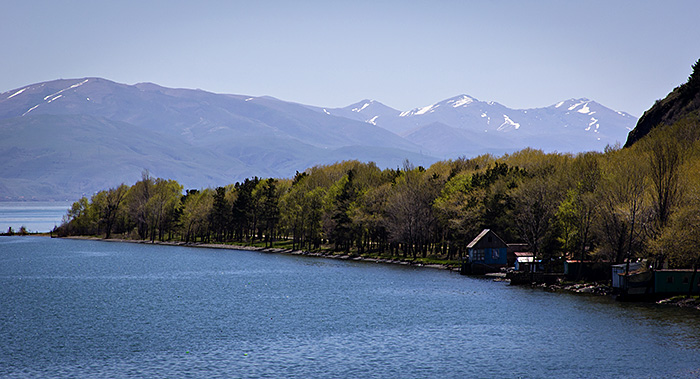Hello friends! This is the last post of the journey, which ended after three and a half months with Azerbaijan, Georgia and Armenia. This is the map of the places visited:
As I said previously, I had a 1250 euro voucher for flights to waste, so I had a lot of them.
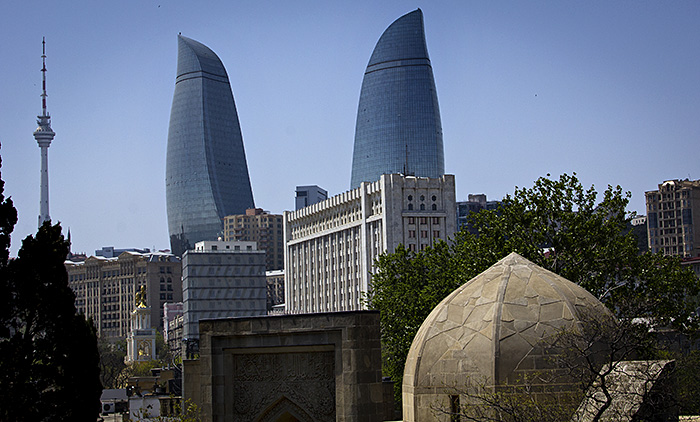 From Uzbekistan I came to Baku , the capital of Azerbaijan, where my friend Riccardo joined me.
From Uzbekistan I came to Baku , the capital of Azerbaijan, where my friend Riccardo joined me.
In this photo we can see the various phases of Baku’s history. In the foreground you can see part of the palace where the rulers of the Shirvanshahs dynasty resided since the 15th century. In the middle buildings from the Soviet period and the usual radio tower. Behind, the modern Baku, with spectacular skyscrapers.
The history of Baku is closely linked to the oil fields around it, exploited since the end of the nineteenth century, which have brought great wealth but also wars to conquer them. Besides oil, Azerbaijan is also rich in gas.
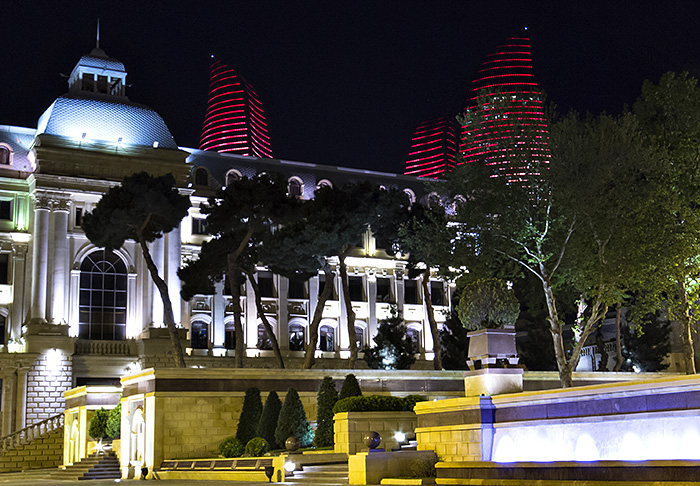 Baku by night. The three skyscrapers are called “Flame Towers”, and at night their external LED display the movement of a red and yellow fire, plus other animations.
Baku by night. The three skyscrapers are called “Flame Towers”, and at night their external LED display the movement of a red and yellow fire, plus other animations.
Like almost all the capitals visited since I arrived in Central Asia (such as Dushanbe, Tashkent and later Yerevan) it is a very modern and clean city, where it is very pleasant to walk among the parks and the new buildings.
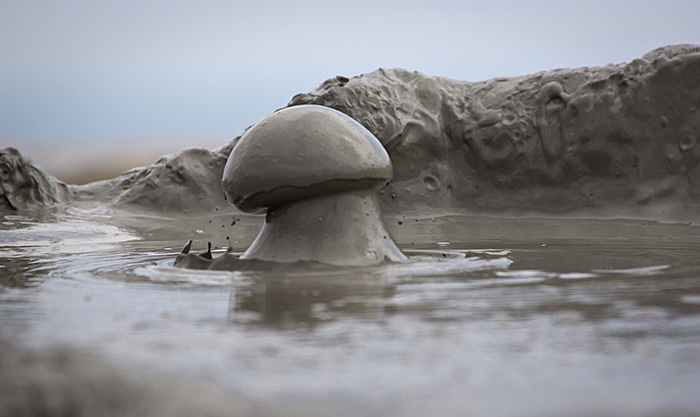 Around Baku there are mud volcanoes.
Around Baku there are mud volcanoes.
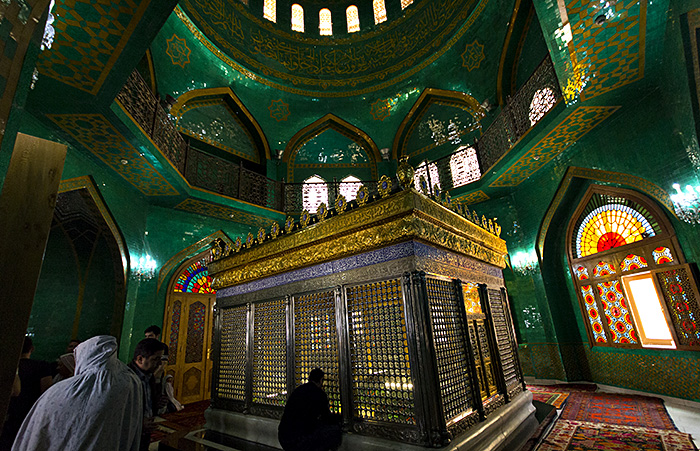 Inside the Bibi-Heybat Mosque, rebuilt in 1990 on the site of a previous mosque destroyed by the Soviets.
Inside the Bibi-Heybat Mosque, rebuilt in 1990 on the site of a previous mosque destroyed by the Soviets.
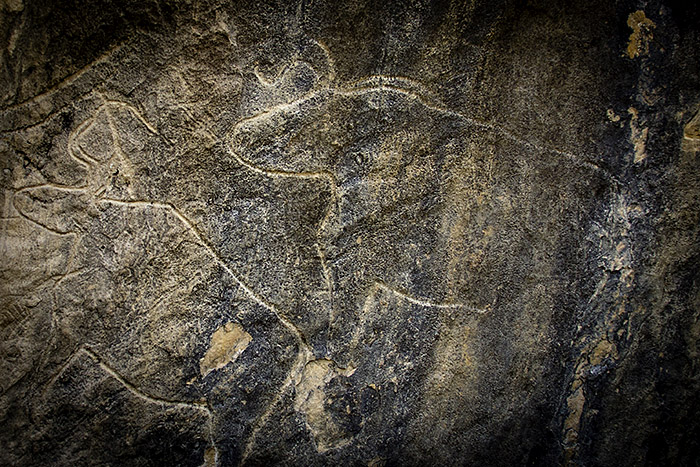 A petroglyph in the Gobustan National Park, where about 6,000 drawings were found in the rocks, some of which date back to around 30,000 years ago.
A petroglyph in the Gobustan National Park, where about 6,000 drawings were found in the rocks, some of which date back to around 30,000 years ago.
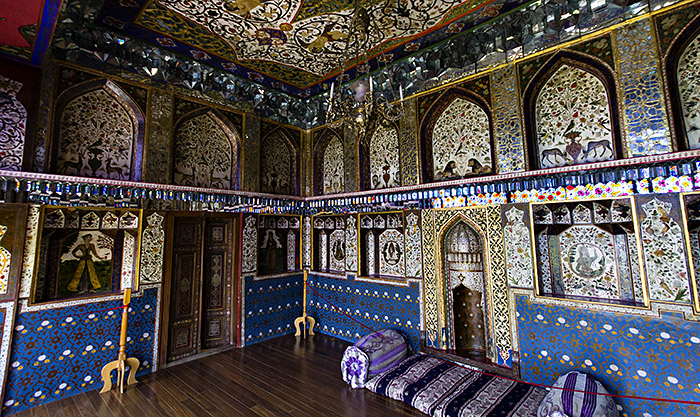 From Baku we went to Sheki. This is a room of the the 18th century winter palace “Shaki Khans”.
From Baku we went to Sheki. This is a room of the the 18th century winter palace “Shaki Khans”.
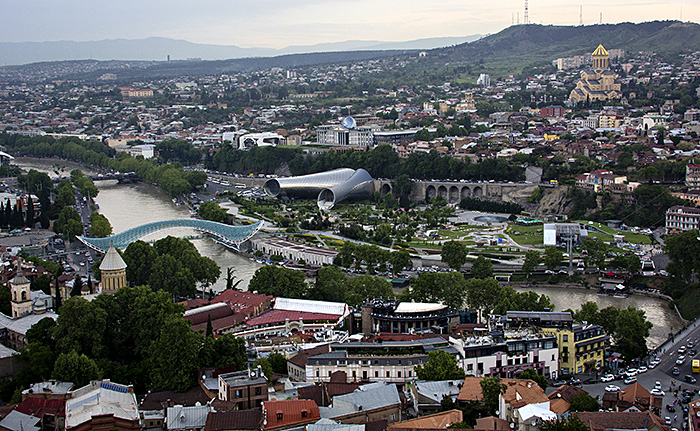 Tbilisi, the capital of Georgia.
Tbilisi, the capital of Georgia.
In the foreground you can see part of the old city. At the top right, the majestic and recent Cathedral of the Holy Trinity. A modern bridge comes close to two strange large tubes that have never been used for anything.
The most beautiful part is the old city, with narrow streets full of bars and taverns. The culture of wine is very strong in Georgia (also for religious reasons) and the vine plant is among the national symbols.
The photo was taken from the fortress overlooking the city.
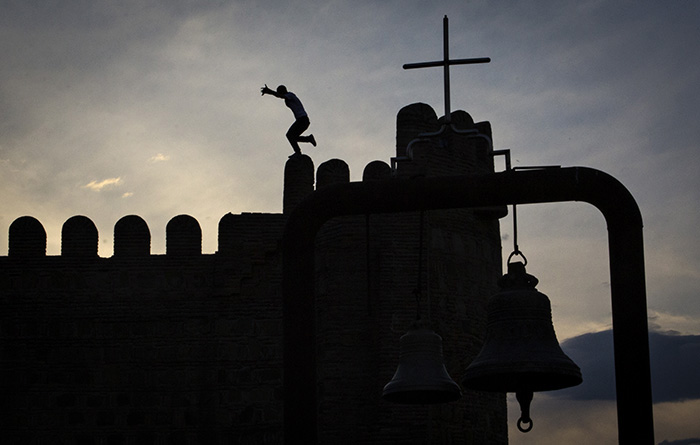 A guy does acrobatics on the fortress.
A guy does acrobatics on the fortress.
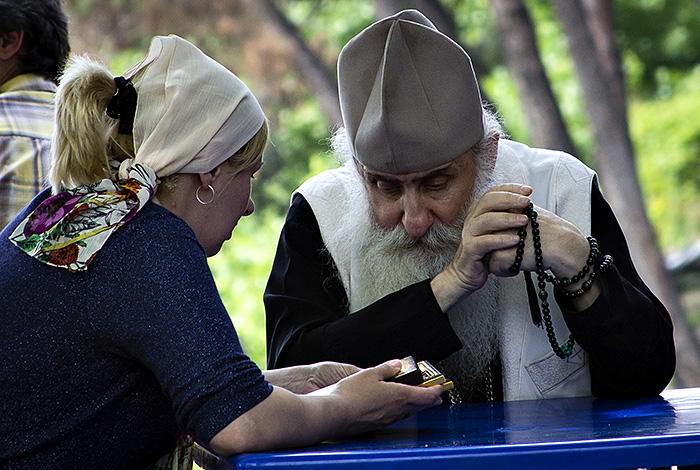 A woman confesses to an Orthodox priest. Religious sentiment is very strong among Georgians.
A woman confesses to an Orthodox priest. Religious sentiment is very strong among Georgians.
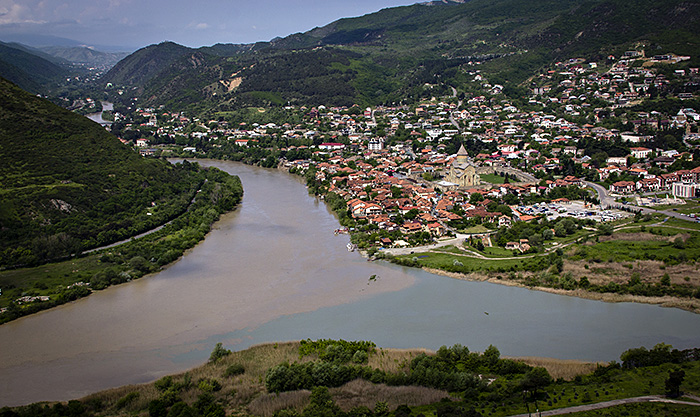 Mtskheta, the ancient capital of Georgia.
Mtskheta, the ancient capital of Georgia.
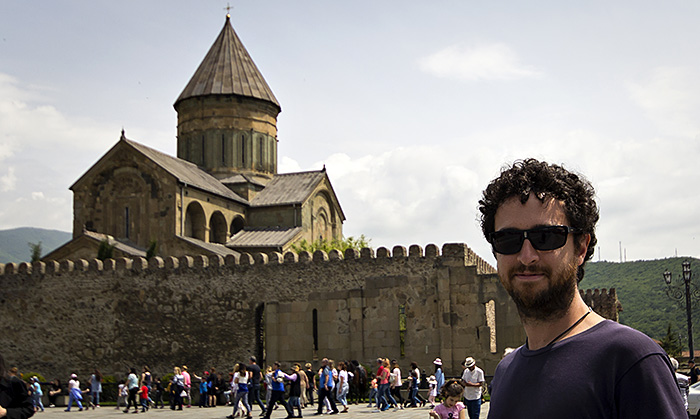 Riccardo, with the cathedral of Mtskheta in the background.
Riccardo, with the cathedral of Mtskheta in the background.
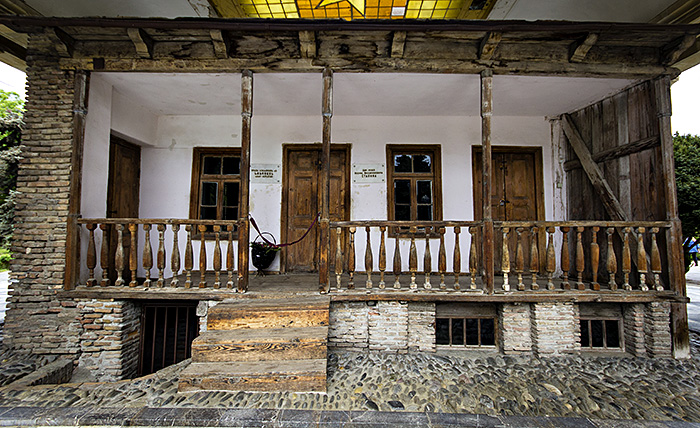
In Gori, the city where Stalin was born. He lived with his poor parents in the rented apartment on the left. Behind the house there is an interesting and controversial museum dedicated to him, left as it was in Soviet times. There is also the wagon he used for his train journeys.
After the recent war against the Russians of 2008, which lasted luckily only 9 days and in which Gori was bombed and occupied because near the border with the disputed South Ossetia, it was decided to permanently remove the museum but later also this decision was revoked.
Probably the inhabitants of Gori themselves have an ambivalent feeling in front of that fellow citizen that became one of the most important figures in contemporary world history.
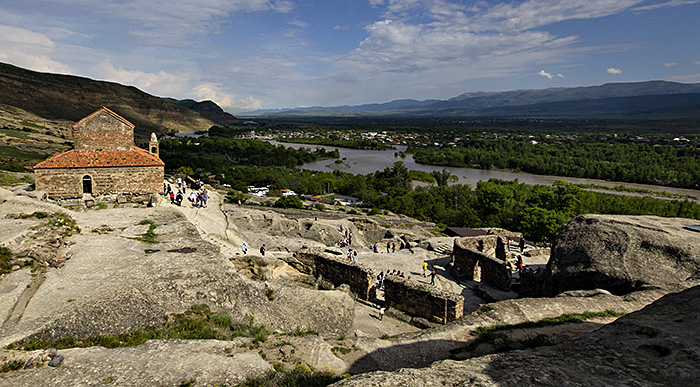 The archaeological site of Uplistsikhe, an ancient city carved into the rock, founded around 3000 years ago and inhabited until the 13th century.
The archaeological site of Uplistsikhe, an ancient city carved into the rock, founded around 3000 years ago and inhabited until the 13th century.
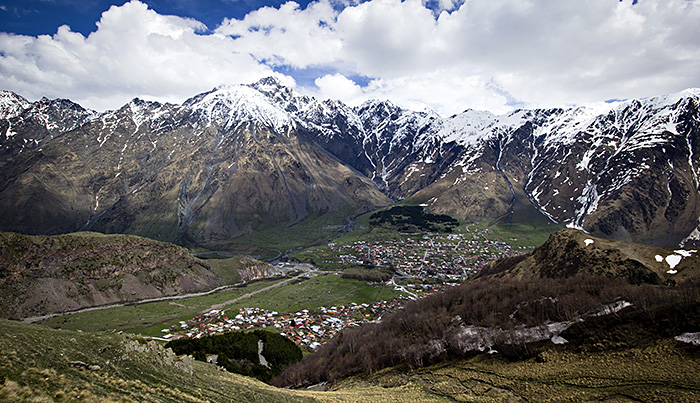 The mountains around the village of Gergeti.
The mountains around the village of Gergeti.
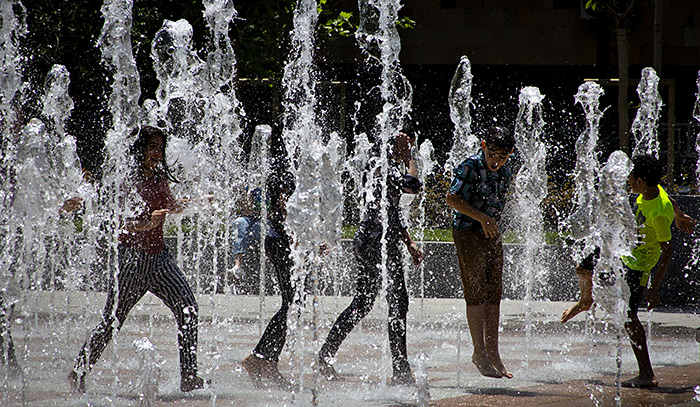 Children playing in one of the many fountains of Yerevan, the beautiful capital of Armenia.
Children playing in one of the many fountains of Yerevan, the beautiful capital of Armenia.
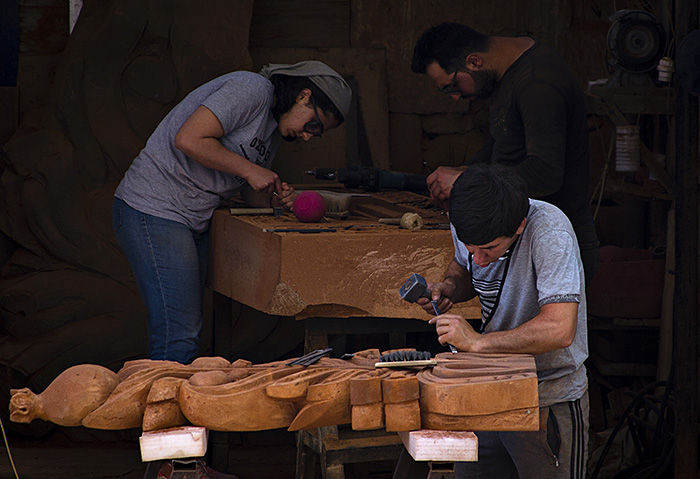 Since the early Middle Ages, Armenia has a tradition of “khachkar”, stones carved with religious motifs. Still today there are craftsmen producing them.
Since the early Middle Ages, Armenia has a tradition of “khachkar”, stones carved with religious motifs. Still today there are craftsmen producing them.
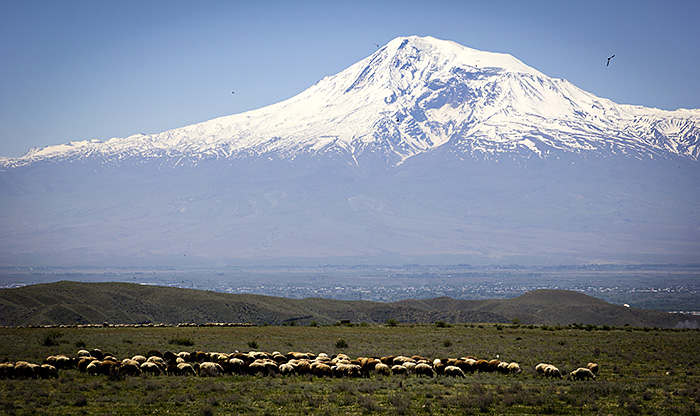 The Mount Ararat, over 5,000 meters high and where, according to biblical legend, Noah’s ark landed. Although located in Turkey, its two peaks are a permanent view in Armenia when looking towards the southwest.
The Mount Ararat, over 5,000 meters high and where, according to biblical legend, Noah’s ark landed. Although located in Turkey, its two peaks are a permanent view in Armenia when looking towards the southwest.
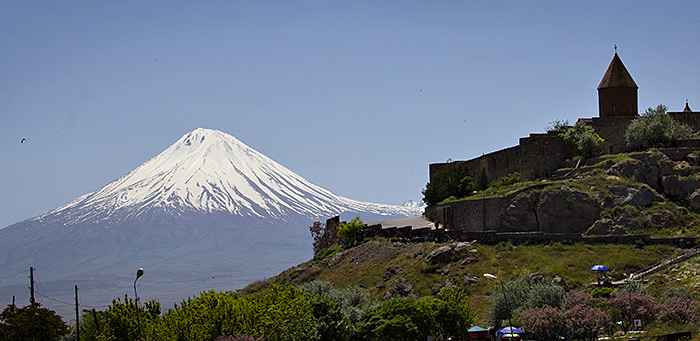 The monastery of Khor Virap, with Mount Ararat in the background. Next to where the monastery now stands, under a deep ditch, there is the cell where Gregory the Illuminator, the main architect of the Christian conversion of Armenia, was imprisoned for 13 years.
The monastery of Khor Virap, with Mount Ararat in the background. Next to where the monastery now stands, under a deep ditch, there is the cell where Gregory the Illuminator, the main architect of the Christian conversion of Armenia, was imprisoned for 13 years.
The conversion happened already in 301, so Armenia was the first nation to have adopted Christianity as the state religion. His Church is unique, having been aligned neither with Catholics nor with the Orthodox over the centuries.
The religious belief is very strong among the Armenians and was the main reason for the genocide suffered by the Turks during the First World War, which caused about one and a half million Armenian deaths. Genocide that Turkey continues to deny shamelessly, despite there are innumerable evidences and proofs.
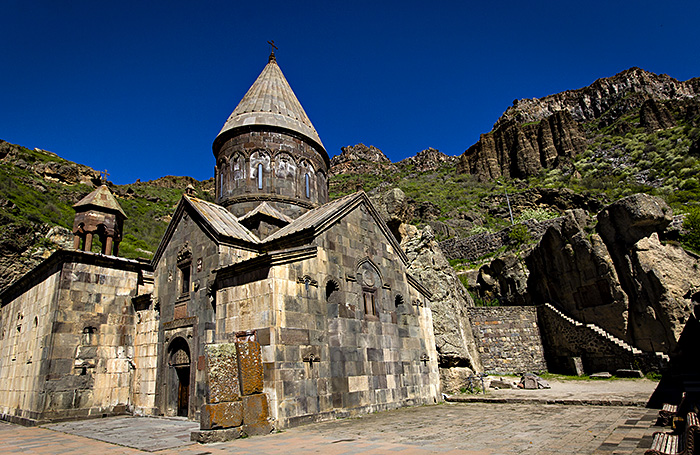 The medieval monastery Geghard, whose first foundation, destroyed in the 9th century by the Arabs, dates back to the 4th century.
The medieval monastery Geghard, whose first foundation, destroyed in the 9th century by the Arabs, dates back to the 4th century.
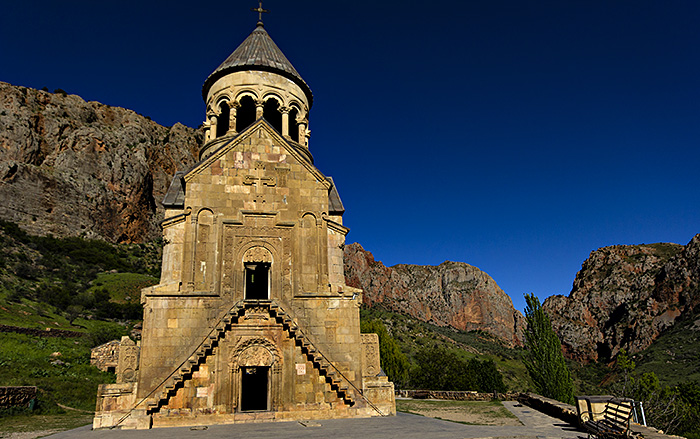 The 13th century monastery Noravank.
The 13th century monastery Noravank.
The monastery is located above a long and spectacular canyon. At the beginning of the canyon, in the village Areni, there is an archaeological site inside a cave where, among various finds, were found tools for wine production dating back to 6000 years ago! What other good thing has humanity created since then? Nothing.
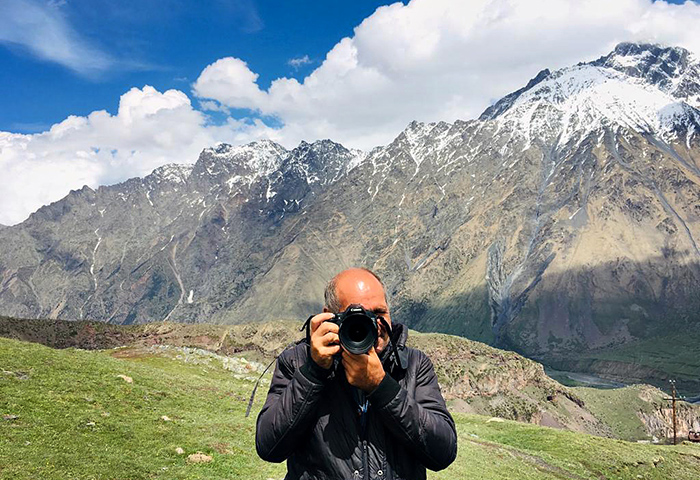 A Counter-Dekaro made by Riccardo.
A Counter-Dekaro made by Riccardo.
Now I’im in Maleventum, the place where I was born. The day after tomorrow I will return to Malta to work. But there is nothing wrong with this, you can’t be always on the road and in life everyone needs to work. It is right like that. That said, when in a few days you will hear about Kamikazdekaro blowing himself up in his office, remember that I have always loved you. Obviously I will try to maximize the damage. It won’t be a vain sacrifice.






















































